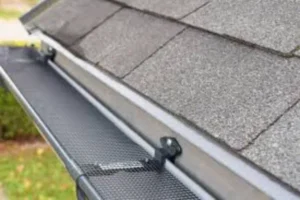What’s the Secret to Building a Safe and Comfortable Shelter for Chickens?

Are your chickens happy and comfortable? Building a home for your chickens is more than just constructing walls; it’s a comprehensive process that requires careful planning and attention to detail. Chickens need a home where they can be safe from predators, protected from the elements, and attend to their daily activities. A good environment can support behaviors that are good to encourage, like laying eggs, having a comfortable place to roost, and exercising.
With a few simple decisions, you can turn a basic building into a warm, welcome, and comfortable home that all chickens love. Even if you are building a coop from scratch or making modifications or renovations to your existing coop, your choices are significant. Here’s how to proceed the right way, starting at the bottom.
Foundation and Safety First
A good foundation is the backbone of any good build. Whether a permanent structure or a mobile dwelling, it should always be raised off the ground enough to minimize flooding risks and also to keep pests from moving in under your chickens’ feet. Proper walls and roofs keep out uninvited guests, such as raccoons, snakes, and wandering dogs.
Instead of chicken wire, use hardware cloth. It provides better protection. Latches for doors and windows should be tightly latched or predator-proof. Safety is a consideration at night, but chickens also need to feel safe during the daytime. If chickens feel secure and less stressed about their environment, they will be more viable and productive as a flock overall.
Routine Cleaning and Maintenance
Maintaining the cleanliness of the areas where your birds live is important to their health and happiness. Regularly remove droppings from perches and nesting areas to prevent health issues. Change bedding weekly and disinfect the entire area monthly with natural, safe cleaners.
A clean and dry chicken coop is less likely to harbor parasites and promote disease-causing bacteria. Also, keep feed and water containers clean! Cleanliness and moisture avoidance usually ensure chickens are healthier, and your everyday routine will be a lot more fun and productive!
The Right Size Makes a Big Difference
One area where people typically go wrong is overcrowding. It’s essential to provide sufficient space: 3-4 square feet per bird indoors and 8-10 square feet outside in the run. Many space restrictions can cause fighting and pecking, and having someone lay an egg can deter them from the coop.
A well-sized “house” allows hens to move around, stretch their wings, and rest without stress. Also, consider any future growth- chicken math is real, and we will likely add some! Planning ahead will help keep your overall setup functional for the number of birds you keep.
Roosting Bars for Comfy Sleep
Chickens perch when they sleep, so roosting bars are the way to go. Roosting bars should always be positioned above the nesting box level to prevent birds from sleeping where they lay eggs. Use smooth wood about 2 inches wide, which is just right for their feet.
Ensure that each chicken has 8–10 inches of roosting space. Make sure the bars are secure and will not tip over. Secured, elevated, off-the-ground, clean roosting bars will encourage good sleep, avoid injuries, and prevent messes. This is a little detail, but it will make a big improvement in their nightly comfort.
Comfortable Nesting Areas
Nesting boxes should be dark, clean, and comfy to promote consistent laying. Generally, one box is sufficient for up to 4 hens, but if they are likely to use it regularly, one box for every three hens is probably best. Nesting boxes should be positioned low but not on the ground, and lined with soft materials such as straw, pine shavings, or hay.
Clean nesting boxes reduce the chance of egg damage and keep hens from laying eggs elsewhere. Placing the boxes away from lots of foot traffic keeps the hens stress-free. When the hens lay in a quiet and safe nest, they are more likely to use it regularly, helping to maintain clean objects for your kitchen and unbroken eggs for the table.
Ventilation Without Drafts
Airflow is a crucial factor in maintaining a healthy environment. Insufficient ventilation will result in moisture accumulation, ammonia odors, and respiratory issues. Ensure vents are positioned high, near the roof, so that any warm, stale air can exit the structure and make way for cooler, fresh air.
Be sure, however, that the vents are not forcing a direct breeze onto the birds’ location, especially on colder days. A properly designed ventilation system will assist in temperature regulation and reduce the presence of less harmful bacteria, ensuring the chicken coop is neither uncomfortable nor harmful to your birds while still keeping them dry and fresh.
Outdoor Space for Exercise and Play
Chickens are avid explorers. A fenced-in run will allow chickens the freedom to scout, scratch, peck, and dust-bathe. Secure fencing will keep predators out, while covering the run with a dusting of plywood can protect them from being nabbed by hawks or climbing predators.
Stumps, logs, and a dust-bathing area are useful for enriching entertainment and health. Allowing chickens unlimited access to the outdoors promotes larger muscle growth, Nerve impulse-triggering muscle stimulation, and other health benefits, including the ability to stretch their legs. Each hen will benefit from being able to roam outdoors freely and reduce potential boredom-related behaviors by having a blend of shelter and freedom.
Summary
The art of creating a cozy and safe home for your flock is all in the details. If you have secure structures, proper flow, and plenty of space, you are on your way to a better living environment. Keeping your space clean and designed well will facilitate natural behaviors and promote health, consistency, and overall peace in your flock. If your birds feel safe and cared for, they will repay you with eggs, companionship, and a generally good vibe. Just build smart and take care to provide optimal maintenance, and your feathered friends will thrive.




